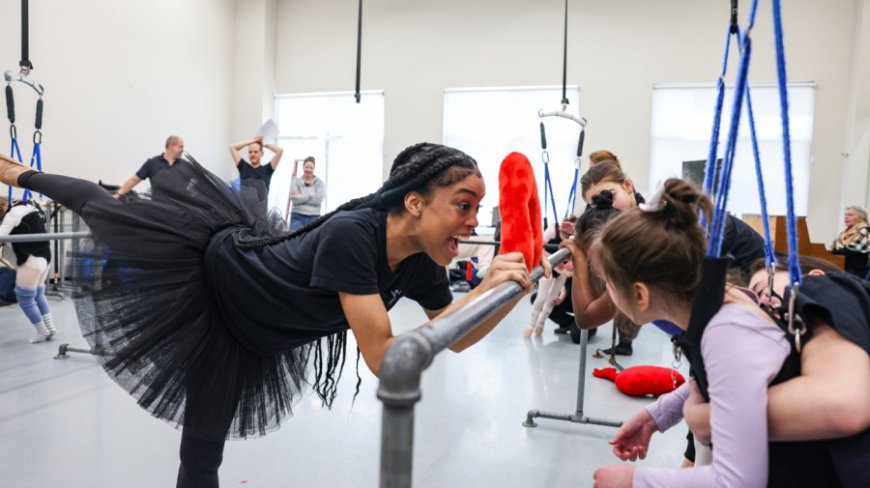Art or algorithms? A choice for America's children
For our children, our communities and our country — let's choose art.

While America fixates on wars in Israel and Ukraine, protests over deportations and fights over tariffs, a quieter crisis is destroying our children from within.
Nearly one-third of U.S. children show signs of addictive behavior tied to mobile phones and social media by age 11. Those with the highest levels of compulsive use are more than twice as likely to report suicidal thoughts, depression, anxiety or aggression.
This isn't speculation — it's the stark finding from a new study that should terrify every parent in America.
Children who feel they can't put the phone down are literally losing hope. And while our attention stays locked on external battles and street demonstrations, we are about to defund the one proven antidote to digital despair: arts education.
The research, as reported by the Financial Times, amplifies the work of social psychologist Jonathan Haidt, whose book “The Anxious Generation” exposed how smartphones are damaging developing minds.
The rise in teen anxiety, depression and self-harm isn't a coincidence — it tracks directly with the spread of smartphones and social media. Haidt's call to action is clear: Give kids their childhoods back by changing our digital norms.
But here's what the policy debate is missing: When I was chairman of the New York State Council on the Arts, we commissioned a study from McKinsey in 1997 titled, “You Gotta Have Art!” It found that for every dollar received in public grants, arts organizations raise $9 from other sources.
In other words, taxpayers get tremendous bang for their buck spent on arts education.
And art isn't a luxury. It's a lifeline.
In low-income and underserved communities — where kids face the highest risk of social media addiction and have the least access to mental health support — arts programs provide what algorithms cannot: structure, purpose and human connection.
They teach discipline and self-expression. They offer sanctuary from the scroll. They give children the chance to discover who they are beyond the screen.
I've witnessed this transformation firsthand for decades. In my role as chairman, I've visited VFW halls turned into rehearsal spaces, summer camps that became studios, shuttered churches reopened as community theaters. These places don't need TikTok — they need teachers, canvases, clarinets and courage.
Without National Endowment for the Arts support, they vanish. Not hypothetically — now.
In Iowa, the beloved nonprofit cinema FilmScene just lost its entire National Endowment for the Arts grant overnight. There was no warning — just a cold, bureaucratic phrase: "no longer prioritized by the president." That funding supported programming for people with disabilities, local festivals and community outreach. Without it, a cultural pillar could collapse.
FilmScene isn't alone. Today, students in high-poverty schools are twice as likely to have no arts education at all. This isn't just unfair — it's strategically stupid. Data show low-income students engaged in arts are twice as likely to graduate college. Arts education creates a pipeline to success and a buffer against isolation and algorithmic manipulation.
So why cut it? Because critics call it elitist?
Here's the truth: Cutting arts funding doesn't hurt elites. It devastates kids who have nothing else. Lincoln Center will survive. The after-school jazz program in East St. Louis will not. The community mural project in West Texas will not.
In 1997, conservative Sen. Jesse Helms (R-N.C.) tried to kill the National Endowment for the Arts — until fellow Republican Sen. Alfonse D'Amato (R-N.Y.) stood up and said no. D'Amato cited hard data and made the case that arts funding wasn't liberal indulgence but conservative common sense.
President Trump should follow that model. He should not only preserve the National Endowment for the Arts, but he should reform it to serve communities most in need. As he did at the Kennedy Center, he can appoint leadership reflecting traditional values — faith, discipline, patriotism, family — and repurpose the NEA to rescue children from digital despair.
This transcends politics. It is about right and wrong.
Arts aren't the enemy of conservative values — they are the antidote to a society forgetting how to raise whole human beings. They teach perseverance, honor tradition and create bonds no app can replicate.
We face a simple choice: algorithm or art. One isolates. The other inspires. One extracts attention. The other expands minds. One sells. The other saves.
For our children, our communities and our country, let's choose art.
Ambassador Earle Mack is chairman emeritus of the New York State Council on the Arts.
What's Your Reaction?
























